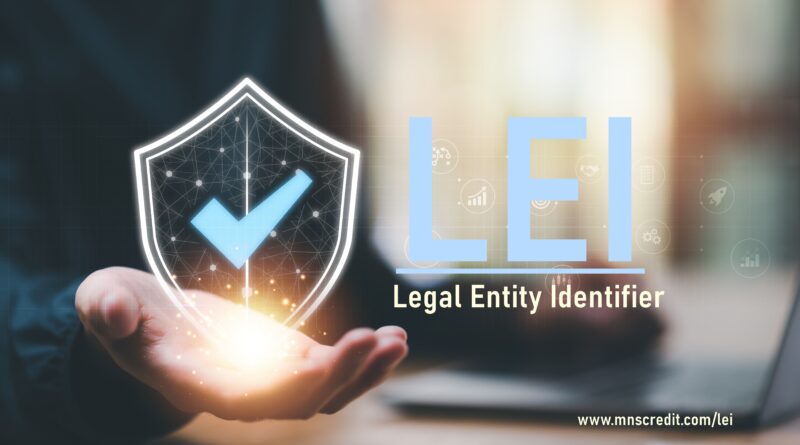Enhancing Payee Verification with the Legal Entity Identifier (LEI)
In today’s rapidly evolving financial landscape, the proliferation of real-time and diverse payment methods necessitates advanced fraud detection and prevention strategies. Traditional methods of verifying payee information, especially in cross-border transactions, often encounter challenges due to discrepancies in name formats, transliterations, and varying address conventions. To address these complexities, the integration of the Legal Entity Identifier (LEI) into payee verification processes offers a robust solution, enhancing accuracy, efficiency, and security in financial transactions.
Understanding the Legal Entity Identifier (LEI)
The LEI is a 20-character, alphanumeric code that uniquely identifies legal entities participating in financial transactions. Established in response to the 2008 financial crisis, the LEI system aims to improve transparency and risk management in the global financial system. Each LEI is linked to key reference information, including the entity’s name, registered address, and ownership structure, providing a standardized and unambiguous identification method.
Challenges in Traditional Payee Verification
Traditional payee verification methods often rely on matching the beneficiary’s name and address with account details. However, this approach faces several challenges:
- Inconsistencies in Data Formats: Variations in name spellings, abbreviations, and address formats can lead to mismatches, resulting in payment delays or rejections.
- Cross-Border Transactions: International payments involve different languages and character sets, increasing the likelihood of errors in name and address matching.
- Fraud Risks: Fraudsters may exploit these inconsistencies to divert funds by manipulating payee information, leading to financial losses.
Advantages of Integrating LEI into Payee Verification
Incorporating the LEI into payee verification processes offers several significant benefits:
- Precise Payee Identification
The LEI provides a unique and standardized identifier for legal entities, eliminating ambiguities associated with name variations. By including the beneficiary’s LEI in payment messages, financial institutions can accurately confirm the identity of the payee, reducing errors and enhancing trust in transactions.
- Enhanced Efficiency in Machine-to-Machine Communication
The structured nature of the LEI facilitates seamless integration into automated systems, enabling efficient machine-to-machine communication. This integration streamlines payment processing, leading to faster settlements and improved customer experiences.
- Cost Reduction and Improved User Experience
Failed payments requiring manual intervention are costly and time-consuming. Utilizing the LEI reduces the likelihood of such failures by ensuring accurate payee identification, thereby lowering operational costs and enhancing user satisfaction.
- Fraud Risk Mitigation
The LEI system allows for early detection of potential fraud by providing access to comprehensive entity information, including legal form and ownership structure. Frequent changes in entity details can serve as red flags, enabling proactive fraud prevention measures.
- Foundation for Future Digital Identity Solutions
The development of the verifiable LEI (vLEI) introduces a digital credential that securely authenticates an individual’s role within a legal entity. This innovation supports secure authentication, digital signing, and permissioning, paving the way for advanced digital identity solutions in the financial sector.
Regulatory Support for LEI Integration
Regulatory bodies recognize the value of the LEI in enhancing financial transparency and security. For instance, the Financial Action Task Force (FATF) has recommended that beneficiary financial institutions ensure that information in payment messages matches beneficiary account details. The European Union’s instant payments regulation also identifies the LEI as a solution for consistent payee identification across borders and payment schemes.
Implementing LEI in Payee Verification Processes
To effectively integrate the LEI into payee verification, financial institutions can adopt the following strategies:
- Incorporate LEI Fields in Payment Messages
Updating payment message formats to include fields for the LEI ensures that this identifier is transmitted alongside traditional account information, facilitating accurate payee verification.
- Enhance Data Management Systems
Upgrading data management systems to handle LEI information allows for efficient storage, retrieval, and processing of entity identifiers, supporting seamless integration into existing workflows.
- Train Personnel on LEI Utilization
Providing training for staff on the importance and use of the LEI in payment processing ensures that personnel are equipped to handle LEI-related information accurately and effectively.
- Collaborate with Industry Stakeholders
Engaging with industry stakeholders, including regulatory bodies and other financial institutions, promotes the development of standardized practices for LEI integration, fostering a cohesive approach to payee verification.
Challenges and Considerations
While the integration of the LEI into payee verification offers numerous benefits, certain challenges must be addressed:
- Adoption Rates: The effectiveness of the LEI system depends on widespread adoption by legal entities and financial institutions. Encouraging participation through regulatory incentives and industry collaboration is essential.
- Data Accuracy: Maintaining accurate and up-to-date LEI information is crucial. Entities must ensure timely updates to their LEI records to reflect changes in their legal status or ownership structures.
- Implementation Costs: Financial institutions may incur costs related to system upgrades and staff training. However, these investments are offset by the long-term benefits of reduced fraud and operational efficiencies.
Conclusion
The integration of the LEI into payee verification processes represents a significant advancement in the quest for secure and efficient financial transactions. As the financial industry continues to embrace digital transformation, the LEI serves as a foundational element in building a transparent and trustworthy payments ecosystem. Ongoing collaboration among regulatory bodies, financial institutions, and legal entities is vital to realizing the full potential of the LEI in enhancing payee verification and mitigating fraud risks.
In conclusion, the adoption of the Legal Entity Identifier in payee verification processes addresses the inherent challenges of traditional methods, offering a standardized, efficient, and secure approach to entity identification. By embracing the LEI, the financial industry can enhance the integrity of payment systems, reduce operational costs, and build greater trust among stakeholders in the global financial ecosystem.




